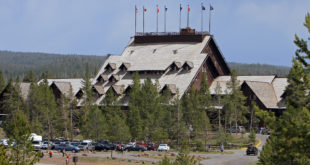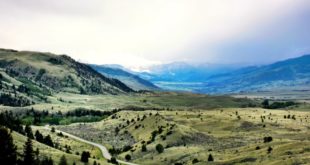In a surprise move, a federal judge rejected a compromise plan from the Bush administration regarding snowmobile usage in Yellowstone National Park, holding an increase in sled traffic would increase air pollution and unduly impact wildlife in America’s oldest national park.
Federal Judge Emmet G. Sullivan was blunt in his assessment that the plan, which would allow up to 540 snowmobiles daily into Yellowstone and Grand Teton parks, focused too much on the use side of the national parks’ mission, to the detriment of conservation. “According to [National Park Service]’s own data, the WUP [Winter Use Plan] will increase air pollution, exceed the use levels recommended by NPS biologists to protect wildlife, and cause major adverse impacts to the natural soundscapes in Yellowstone,” Sullivan wrote. “The plan clearly elevates use over conservation of park resources and values.”
To say snowmobile usage in Yellowstone has been a contentious issue over the years is an understatement. Conservationists want to see snowmobile usage in Yellowstone eliminated, with winter visitors ferried with snowcoaches. Some outdoors groups want to see snowmobile usage expanded to up to 700 sleds a day in the park. The middle ground eventually found by the park service calls for 540 sleds a day, but the snowmobiles must be be powered by lower-emission four-stroke engines, and visitors must be accompanied by a guide. With these restrictions in place, actual snowmobile usage the past few winters has been around 250 sleds a day.
The lawsuit came about after a group of conversation groups — including Earthjustice, the Winter Wildlands Alliance, Greater Yellowstone Coalition and the National Parks Conservation Association — opposed the new rules, announced in late 2007, after the National Park Service adopted the snowmobile plan in December. A lawsuit seeking to expand the winter usage is currently before a federal judge in Cheyenne; that action seeks to increase winter usage to 720 snowmobiles per day.
The irony: with snowmobile usage in general decline, both lawsuits are objecting to limits that are unlikely to be reached often. Even with a higher snowmobile limit, winter usage in Yellowstone has increased because of a rise in cross-country skiiers and snowshoers; with an actual average of 250 snowmobiles a day, the Park Service has rarely reached a limit of 540, never mind the 720 snowmobiles a day the pro-sled group is arguing for. So, like so many legal battles over Yellowstone, it’s largely a symbolic fight.
Still, banning snowmobiles completely would certainly have unintended economic side effects. For starters, the winter economies of Cooke City, West Yellowstone and Gardiner rely heavily on snowmobile owners; while these cities would probably retain some snowmobile business if sleds were barred in the park (especially Cooke City). A utopian vision of well-heeled cross-country skiers queuing up for low-emission snowcoaches to access the park is all well and good, but the reality is that snowmobile users — however much their numbers are dwindling — is still an important economic part of the Yellowstone economic ecology.
 Yellowstone Insider Your Complete Guide to America's First National Park
Yellowstone Insider Your Complete Guide to America's First National Park





